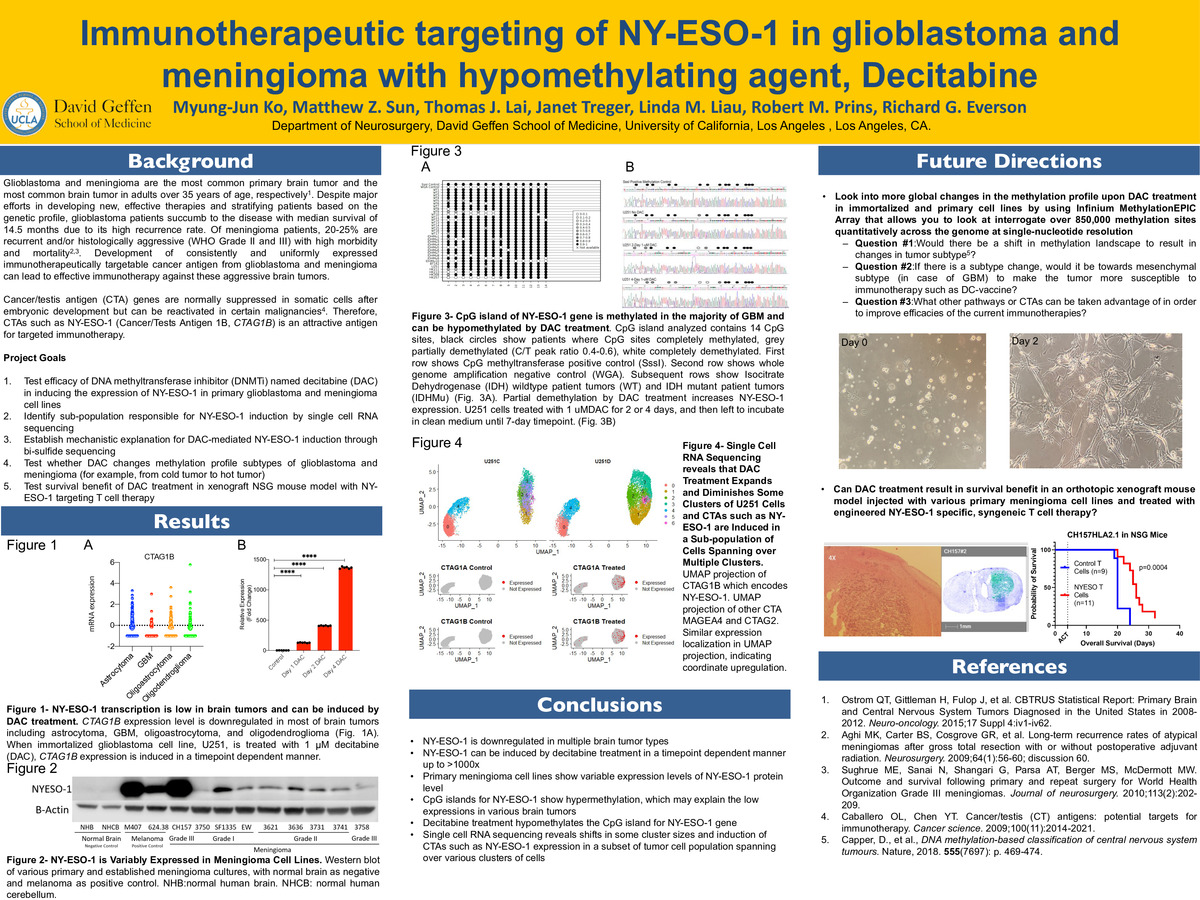-
Author
Myungjun Ko -
PI
Dr. Richard G. Everson
-
Co-Author
Myung-Jun Ko, Matthew Z. Sun, Thomas J. Lai, Janet Treger, Linda M. Liau, Robert M. Prins
-
Title
Immunotherapeutic targeting of NY-ESO-1 in glioblastoma and meningioma with hypomethylating agent, Decitabine
-
Program
CTSI TL1 Summer Program
-
Other Program (if not listed above)
-
Abstract
Glioblastoma and meningioma are the most common primary brain tumor and the most common brain tumor in adults over 35 years of age, respectively1. Despite major efforts in developing new, effective therapies and stratifying patients based on the genetic profile, glioblastoma patients succumb to the disease with median survival of 14.5 months due to its high recurrence rate. Of meningioma patients, 20-25% are recurrent and/or histologically aggressive (WHO Grade II and III) with high morbidity and mortality2,3. Development of consistently and uniformly expressed immunotherapeutically targetable cancer antigen from glioblastoma and meningioma can lead to effective immunotherapy against these aggressive brain tumors. Cancer/testis antigen (CTA) genes are normally suppressed in somatic cells after embryonic development but can be reactivated in certain malignancies4. Therefore, CTAs such as NY-ESO-1 (Cancer/Tests Antigen 1B, CTAG1B) is an attractive antigen for targeted immunotherapy. In the current work, we will try to 1.Test efficacy of DNA methyltransferase inhibitor (DNMTi) named decitabine (DAC) in inducing the expression of NY-ESO-1 in primary glioblastoma and meningioma cell lines, 2.Identify sub-population responsible for NY-ESO-1 induction by single cell RNA sequencing, 3.Establish mechanistic explanation for DAC-mediated NY-ESO-1 induction through bi-sulfide sequencing, 4.Test whether DAC changes methylation profile subtypes of glioblastoma and meningioma (for example, from cold tumor to hot tumor) , and 5 Test survival benefit of DAC treatment in xenograft NSG mouse model with NY-ESO-1 targeting T cell therapy.
-
PDF
-
Zoom
https://uclahs.zoom.us/j/94013343320?pwd=cnppNXhJeEN0a2M0Zkd6L0dOMGVWdz09

